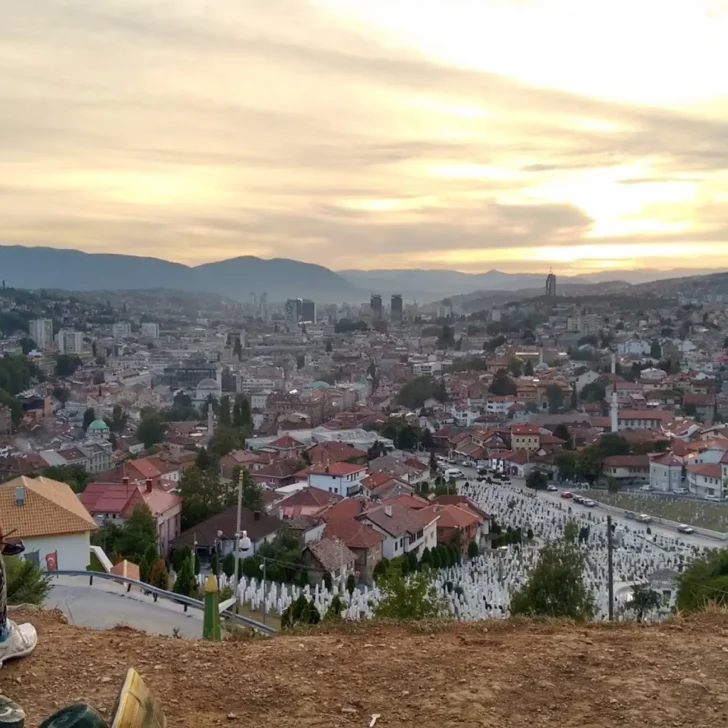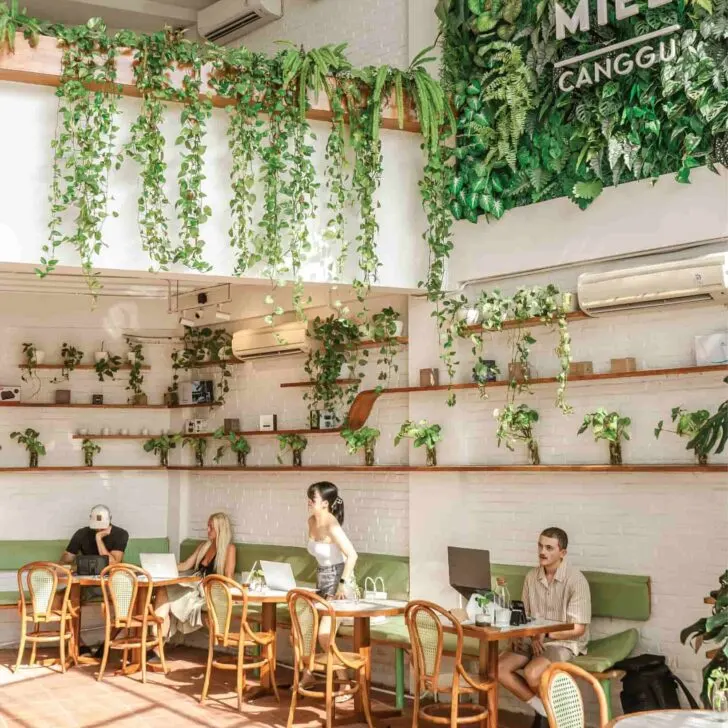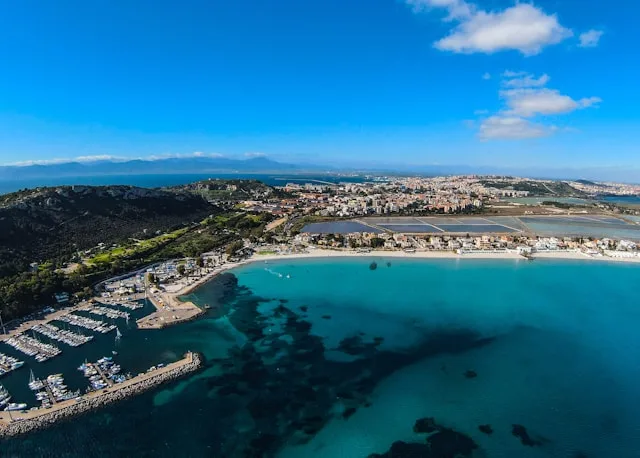We may receive a commission if you make purchases through affiliate links (at no extra cost to you). Read why our approach to travel is different.
If you ask me, Nepal all too often flies under the radar when it comes to street food. Well, no surprise here since it’s often overshadowed by India, its foodie neighbor. But if you’ve spent time pottering about Nepali towns and markets (as I have, over and over again), you probably already know that street food in Nepal is super diverse.
Contrary to popular belief, Nepalese street food is so much more than merely momos and chow mein. A lot of it is actually tied to ancient traditions, festivals, and beliefs. This, for me, makes the experience even more special. Nepal is also known for its gloriously fresh produce, which means the food is positively bursting with flavor.
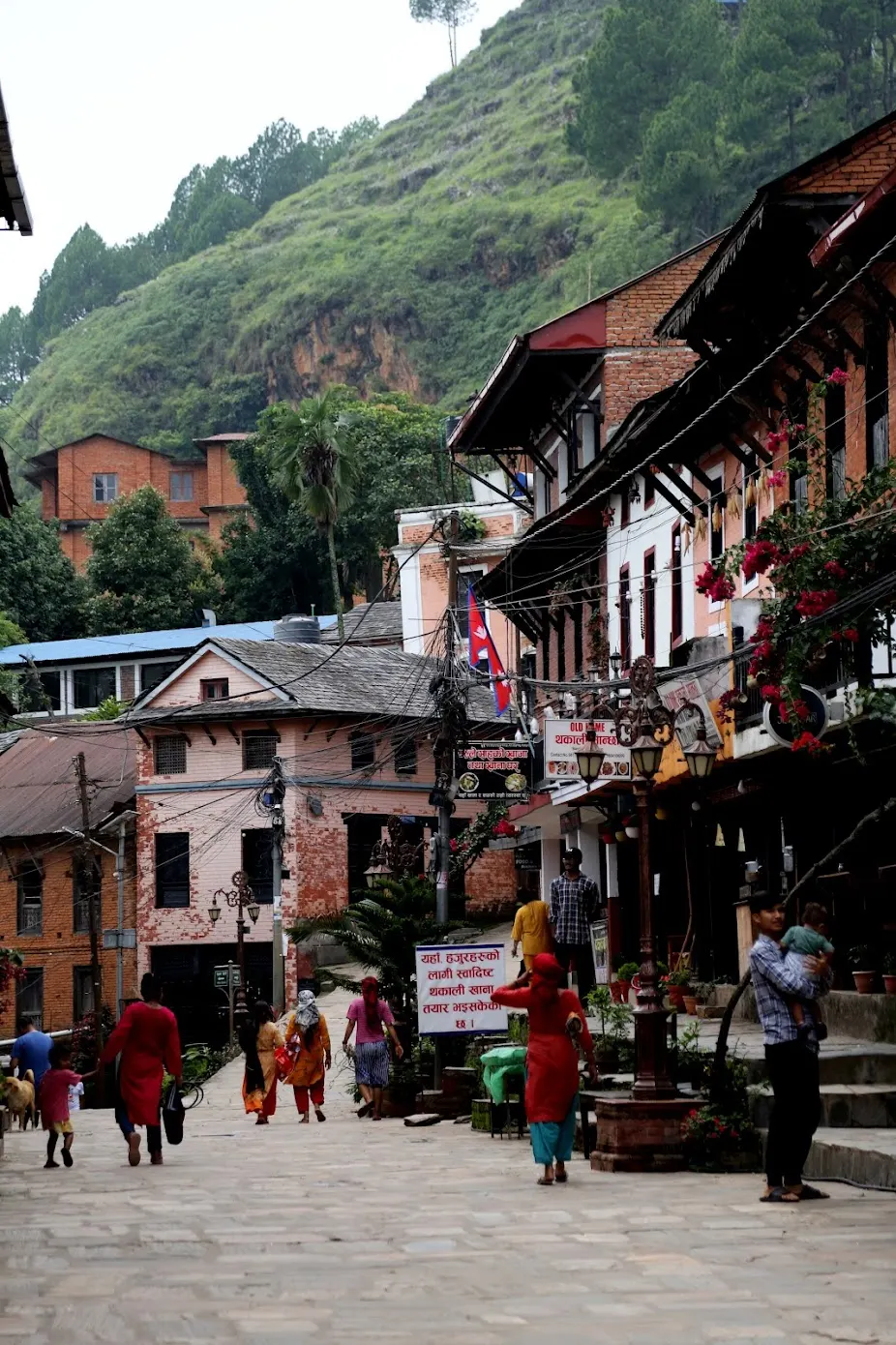
Skip to...
- What to know about street food in Nepal
- Street Food in Nepal
- 1. Momo: The Nepalese Street Food from the Mountains
- 2. Sel Roti: The Festive Street Food in Nepal
- 3. Chatamari: The Local “Pizza” with a Twist
- 4. Sukuti: The Perfect Street Food in Nepal for Meat Lovers
- 5. Laphing: Tibetan Street Food Turned Nepalese
- 6. Bara: The Newari Lentil Pancake
- 7. Bhakka: Street Food in Nepal with Terai Flavors
What to know about street food in Nepal
Before we properly get into it, Nepalese food is more than just sustenance. It’s an integral part of the local cultural and religious identity. As such, you will often see locals placing fruits or home-cooked dishes in front of religious structures.
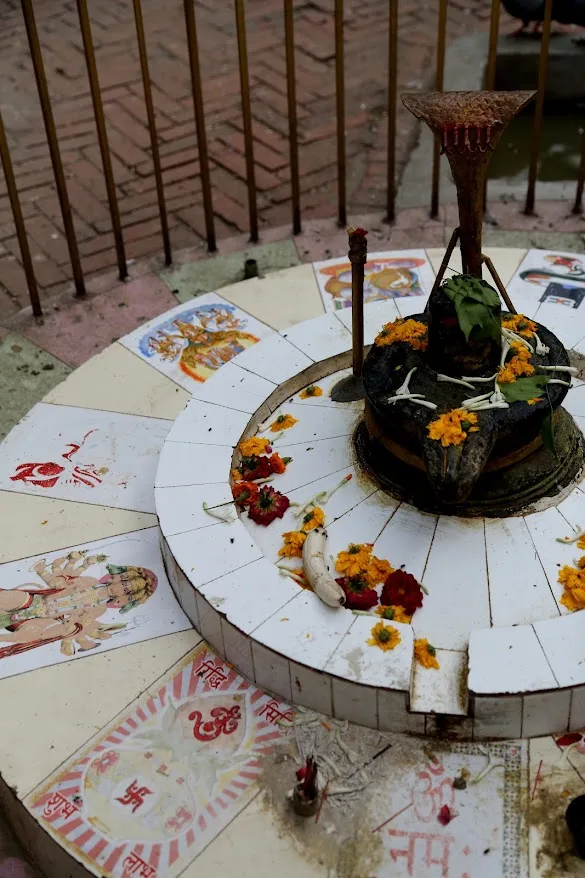
A lot of what you’ll find on the streets today – like bhakka, bara, and sel roti – comes from offerings that are originally prepared during seasonal and religious festivals. For example, sel roti is specifically made during festivals like Tihar and Dashain. Preparing it is a ritual in itself: they’re made at dawn, with the whole family coming together to mix the dough while reciting blessings. The sel rotis are then offered to the goddess Laxmi before eating.
Over the years, these dishes shifted from ritual offerings to street stalls as tourism expanded in the country.
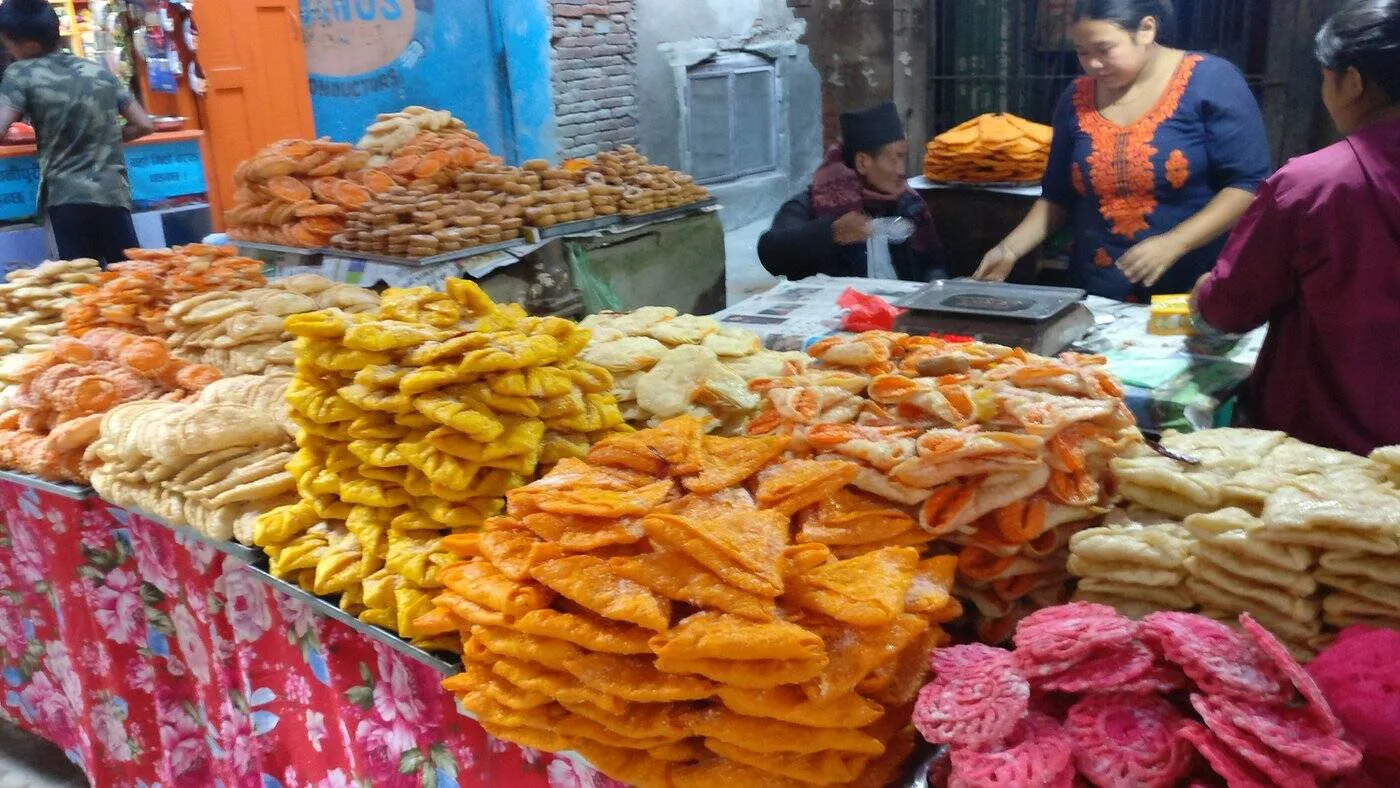
When munching your way through street food in Nepal, you might also notice a blend of Indian, Chinese, and Tibetan influences. Items like thukpa and momos came to Nepal through the Tibetan refugees who eventually settled in Kathmandu Valley. In the south, you’ll mainly find snacks like bhakka, a steamed rice cake that’s quite similar to what you might find on the other side of the border in India.
Another thing you might notice is the regional varieties of street food in Nepal. Higher up in the hills, the local street food scene mostly leans on foraged and fermented ingredients. Head down to the Terai lowlands and you’ll find plenty of steamed snacks, most of which are made up of ground rice – a nod to tribal harvest traditions.
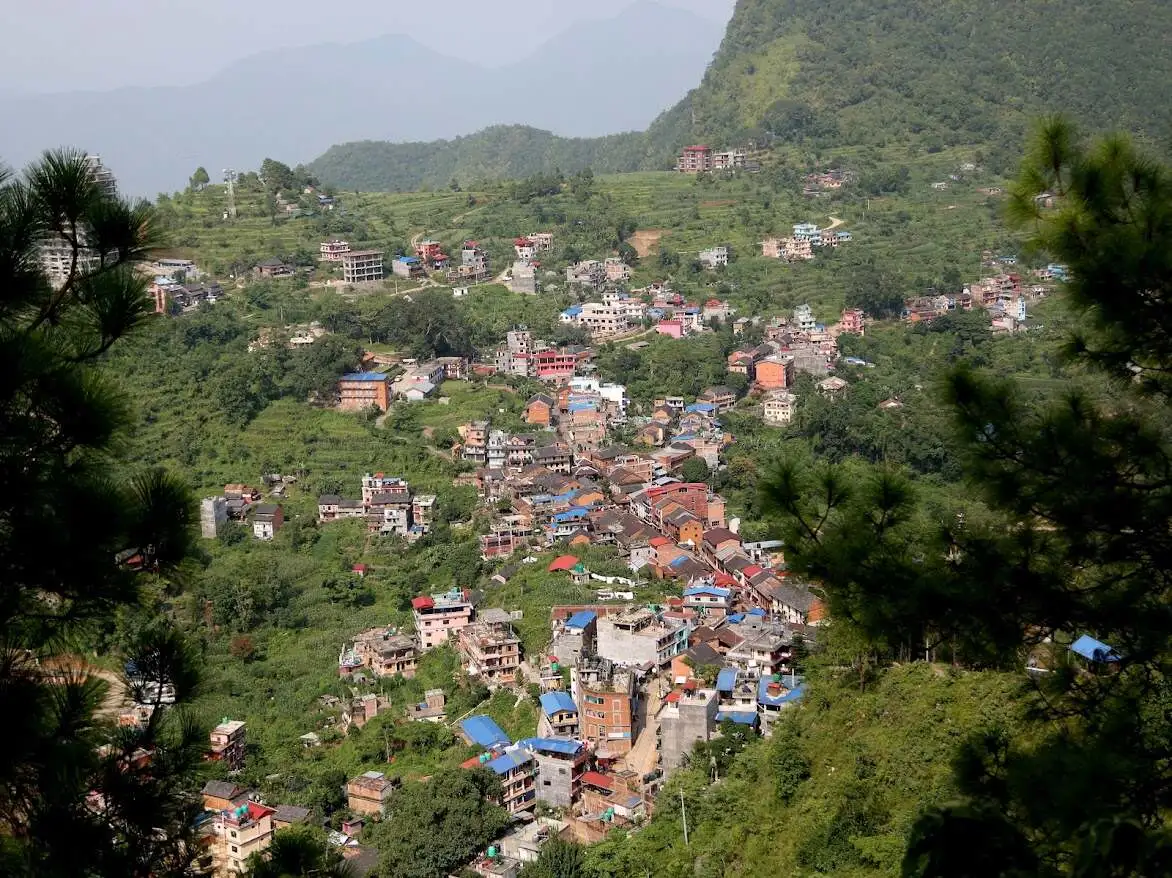
Now that you know a bit more about what to expect from street food in Nepal, let’s check out some of the most scrumptious ones!
Street Food in Nepal
1. Momo: The Nepalese Street Food from the Mountains
This is one street food in Nepal that needs exactly zero introduction! Originally a classic Tibetan dish, this steamed dumpling got its own Nepalese twists when Tibetan refugees brought it to the country.
For starters, it’s filled with loads of aromatic Nepalese spices – quite the change from its milder Tibetan counterpart. Nepalese momos also tend to be thinner, with a more diverse range of flavorings, chutneys, and dipping sauces. You’ll find both fried and steamed varieties, but it’s good to know that steamed momos are more traditional. Momo stalls are especially popular in touristy areas like Kathmandu and Pokhara.
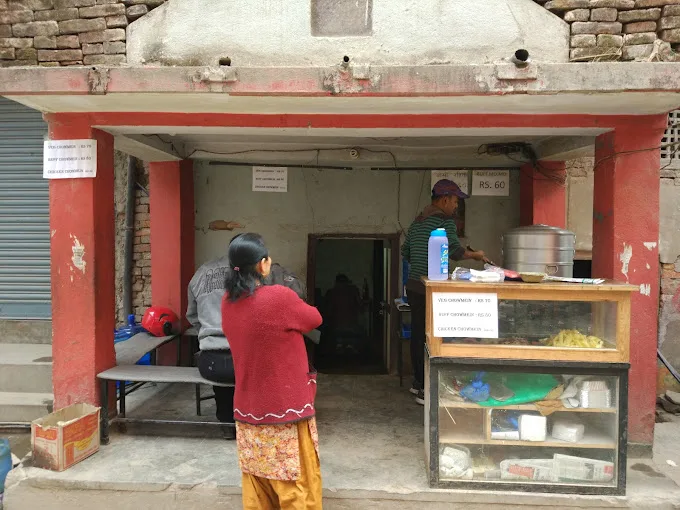
If you’re vegan, rest assured that virtually all stalls sell vegetable momos filled with carrots, cabbage, and onions. More modern twists include cheddar cheese or paneer-filled ones. And then, you’ve got jhol momo (my personal favorite!). This consists of super soft steamed momos served in a warm, tangy, and spiced broth. Exceptionally comforting if you’re visiting those colder, high-altitude areas!
For something classic, you may wish to try buff momo, the spicy variant that’s normally filled with minced buffalo meat. This one is super popular among locals.
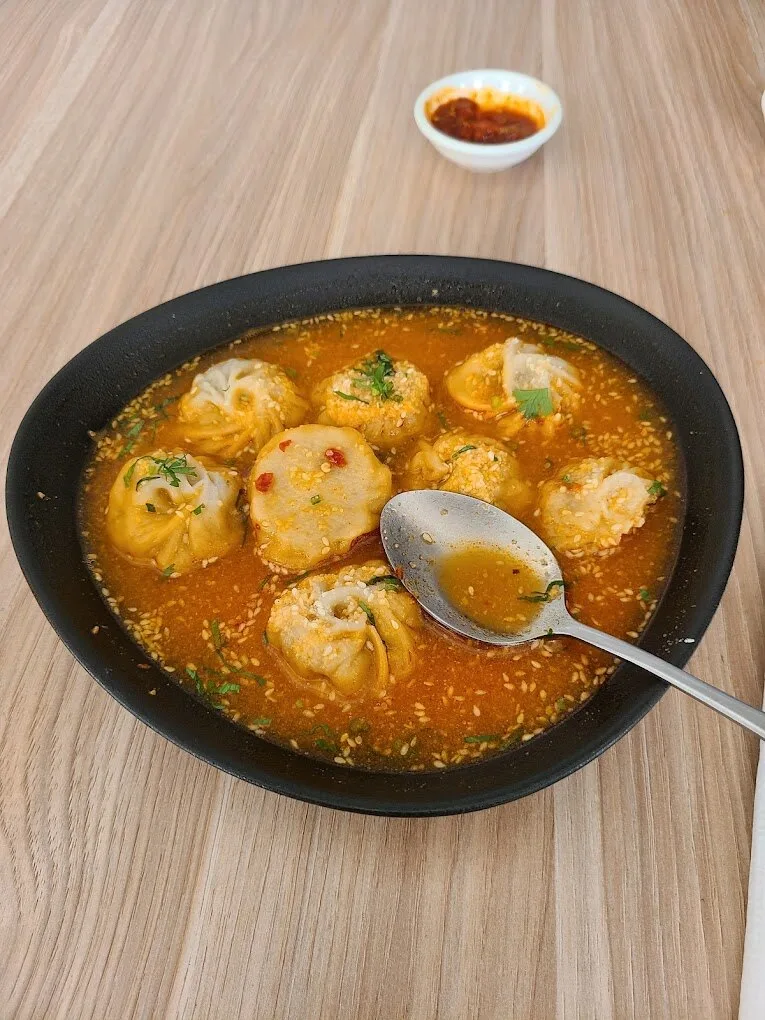
(Credit: Rahul Kumar Lal Das)
Travel tip: Head to Narayan Dai Masangalli Famous Mo:Mo for the absolute best dumplings in Lalitpur – well at least, according to me!
This hole-in-the-wall place may not look like much, but I promise their food is insanely delicious. Be sure to ask for extra tomato-sesame chutney. One serving just doesn’t cut it for me.
2. Sel Roti: The Festive Street Food in Nepal
As I mentioned, sel roti may be one of the most popular street foods in Nepal, but it’s also a beloved ceremonial food. At home, preparing sel roti is an intergenerational activity, with kids learning the ropes from their parents from a young age.
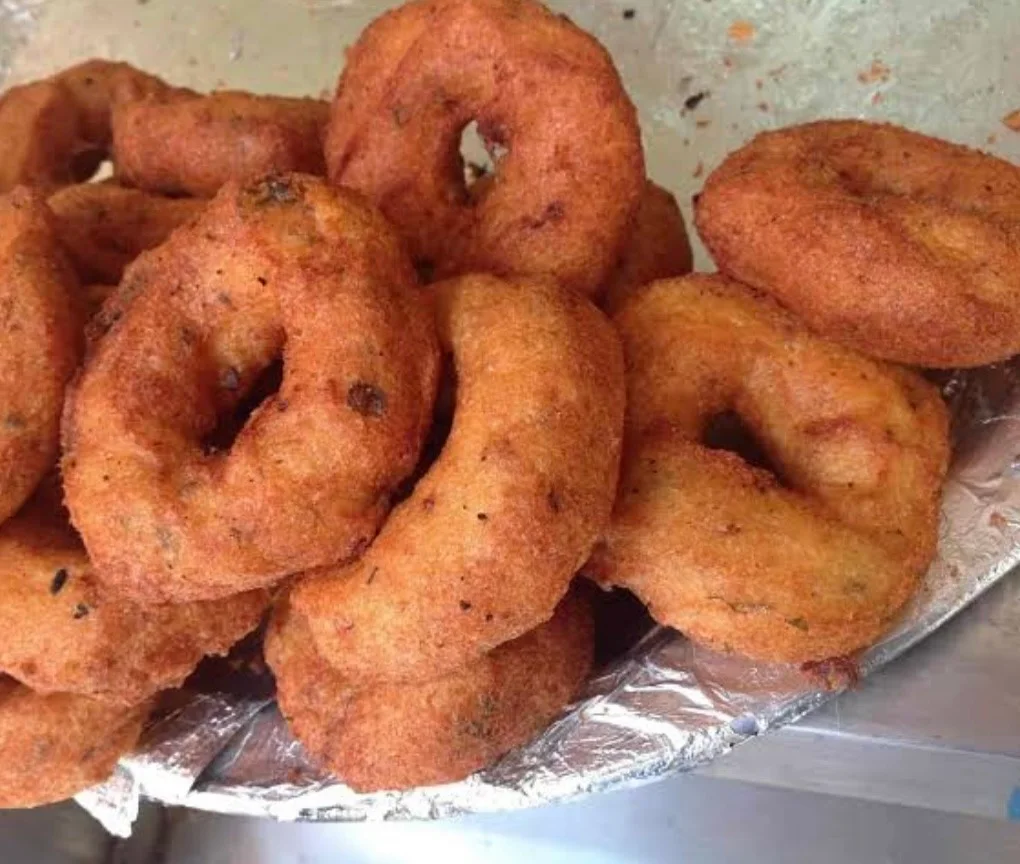
Served during major Hindu festivals, this ring-shaped snack is prepared by soaking and grinding raw rice into a smooth batter. It’s then mixed with ghee, sugar, cardamon, milk, and mashed banana. The batter is shaped into rings and deep-fried. The Nepalese version of donuts, if you will!
Most vendors usually fry the batter in massive iron pots over open flames. The fritters are then left to drain in woven bamboo baskets. Sel roti is commonly eaten plain, with a dab of raita (spiced yogurt sauce) or with a side of aloo tarkari (potato curry).
Here’s the good news: sel roti is insanely popular on the streets of Kathmandu, so you’ll find it just about everywhere. To enjoy this snack like a true local, skip the fancy cafes and head over to the vendors in Asan Bazaar or around Pashupatinath Temple.
Personally, the best I’ve tried was from an unnamed square in Indra Chowk, right adjacent to Durbar Square. Don’t forget to ask for a glass of sweet, milky chai to wash it down.
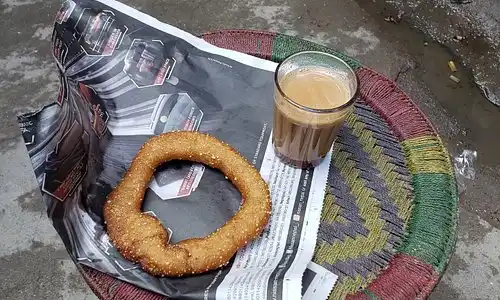
Local tip: Sel roti is available all day long on the streets of Kathmandu. However, I suggest that you check out the early morning stalls for the freshest batches.
Locals often have it for breakfast, so vendors usually start frying them at the crack of dawn. Believe me when I say that stale (and sometimes soggy) sel roti that’s been sitting for hours can’t even begin to compare to those super fresh, crispy ones.
3. Chatamari: The Local “Pizza” with a Twist
Dubbed Nepalese pizza by the locals, chatamari is a classic Newari dish. Like most street food in Nepal, chatamari is traditionally prepared during pujas (prayer ceremonies).
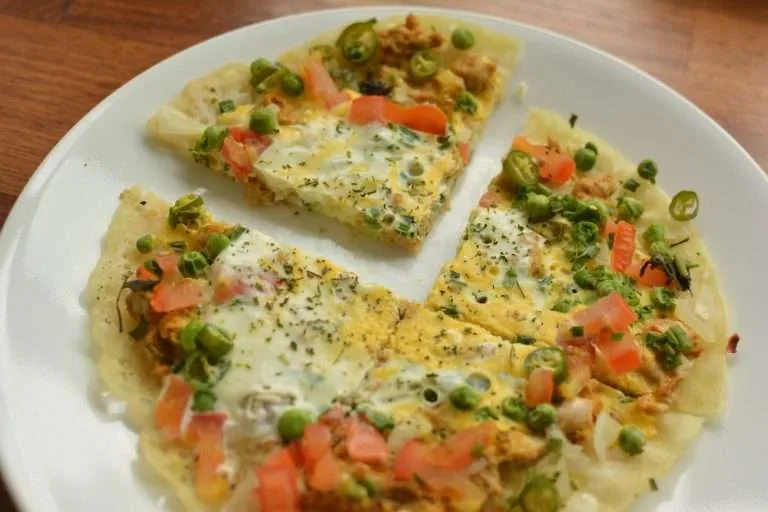
A thin, crepe-like flatbread, chatamari doesn’t have the same doughy consistency as classic pizzas, though. Rather, chatamari has a super crispy base that’s generously topped with just about everything you can think of, from buffalo meats to spiced potatoes, and assorted vegetables. In true Nepalese style, a generous sprinkling of chopped up green chilies is added right before serving.
Some stalls in Patan even serve plain chatamari with just a light dusting of sugar instead of all the hefty toppings.
While you’ll find chatamari all over the country, I do believe that the best place to enjoy it is in Bandipur, one of the most beautiful places in Nepal.
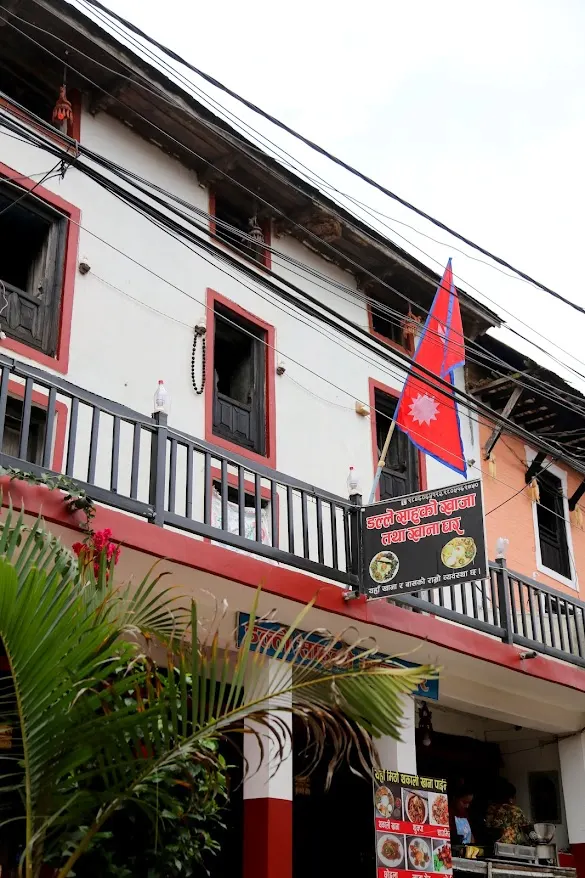
In fact, most places in Bandipur still prepare it the traditional way over food-fired griddles for extra smokiness. As you wander those quaint, cobbled streets of Bandipur, keep your eyes peeled for large round skillets, stacks of chopped toppings, and crowds of locals – always a good sign!
If you visit Bandipur during events like Tihar or Bisket Jatra, you’ll find plenty of pop-up stalls run by Newar aunties selling fresh chatamari right on the bazaar street. Speaking of the bazaar, be sure to check out a family-run spot known as The Samay Baji located in a small, nondescript alley just off the market.
This place doesn’t look like much, but it specializes in Newari street food, all served the traditional way. You can enjoy it with or without a side of fermented radish. Here’s a little tip for you: always say yes to the radish!
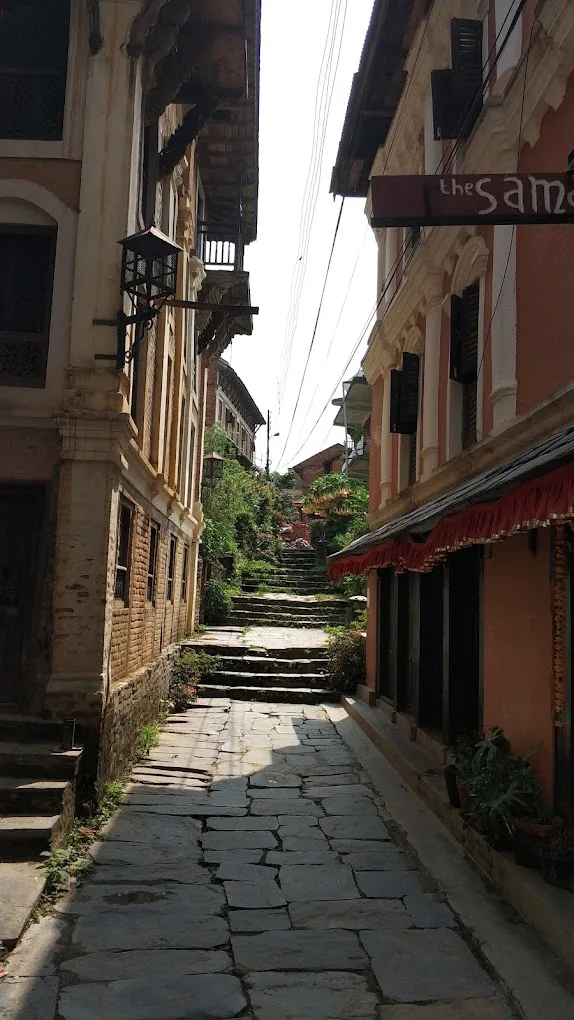
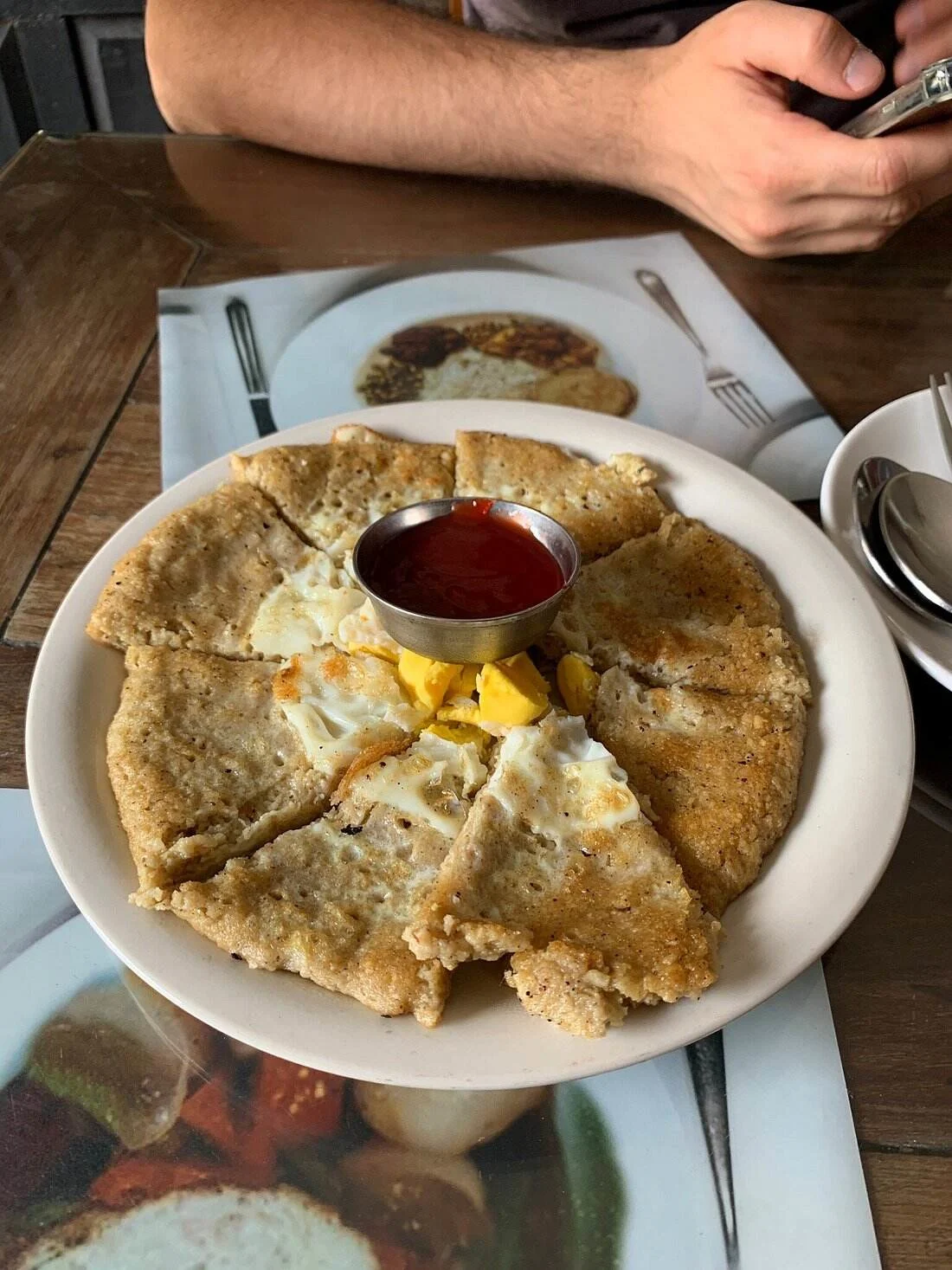
4. Sukuti: The Perfect Street Food in Nepal for Meat Lovers
A staple among the Gurung and Limbu people, sukuti is a dried meat snack. Like jerky, only way better! The dried meat is roasted over an open flame and seasoned before serving.
Because Hindus don’t consume beef for religious reasons, sukuti is traditionally made from water buffalo (buff sukuti). Goat sukuti (bakhra sukuti) is also quite popular in the Rai, Gurung, and Magar communities. While goat sukuti is made the same way – sun dried and roasted with spices – I noticed that it’s got a gamier flavor to it. In Nepal, the goat variety is especially popular during harvest festivals and weddings.
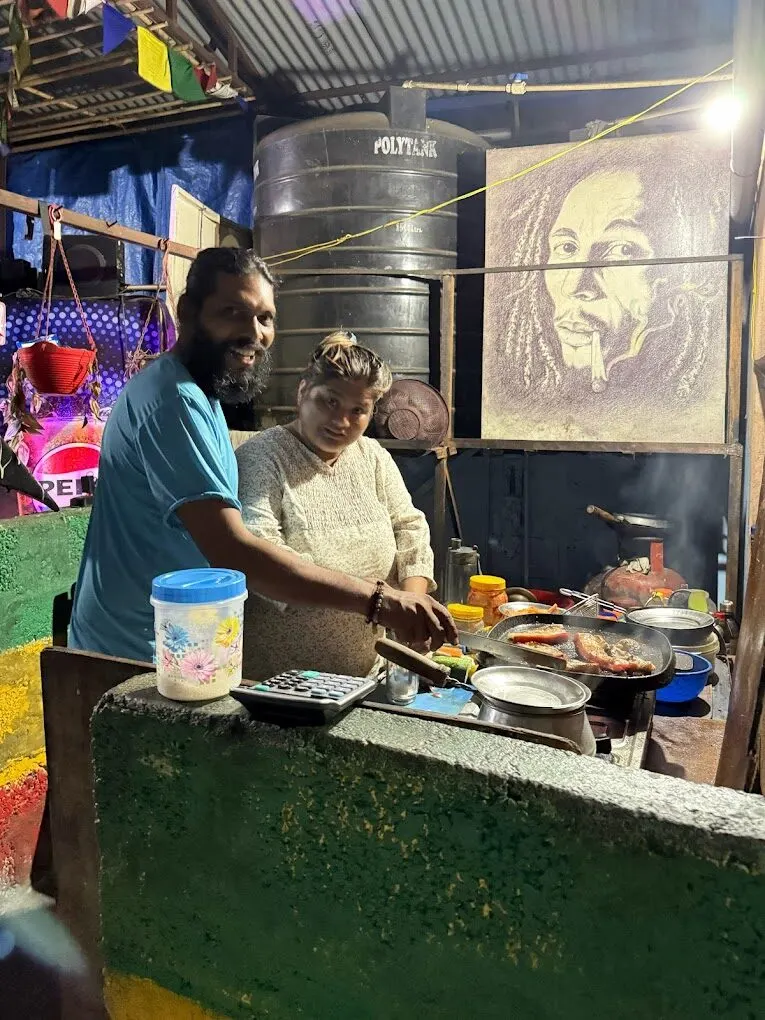
In Pokhara and Kathmandu, you may come across stalls selling sukuti sadheko, which refers to a cold, salad-style variation. The meat is chopped and mixed with diced onions, mustard oil, fresh green chili, lemon juice, and timmur (spicy Nepali pepper).
You’ll also find sukuti made from lamb, duck, and chicken. Usually, the meat is pounded with a mixture of tomato, ginger, garlic, and onion for extra flavor. I also saw some vendors dousing the sukuti with lashings of chili powder and cumin after roasting.
Personally, I’m more partial to saag sukuti, a moreish dish where the sukuti is pan-fried with finely chopped saag (leafy greens). Saag sukuti goes down a treat with Chhyang, a Newari rice wine. The best I had was from Saag Sukuti Restaurant, where they serve you in classic metal thali plates.

Travel tip: Sukuti was originally a winter survival staple. It was born out of necessity in rural Nepal where refrigerators were unheard of at the time.
Local families would thinly slice the buffalo meat and leave them to sun dry on the roof. They’d then store the dried meat under rafters or in bamboo containers.
5. Laphing: Tibetan Street Food Turned Nepalese
Laphing is a cold noodle dish known for its slightly chewy, slippery texture. I know it doesn’t exactly sound appealing. But trust me when I say this iconic street food in Nepal is packed with glorious flavors!
Introduced to the country by Tibetan refugees, laphing is something of a street food phenomenon in Nepal. It’s especially popular around areas with a higher concentration of Himalayan communities like Jawalakhel, Boudhanath, and Swayambhu.
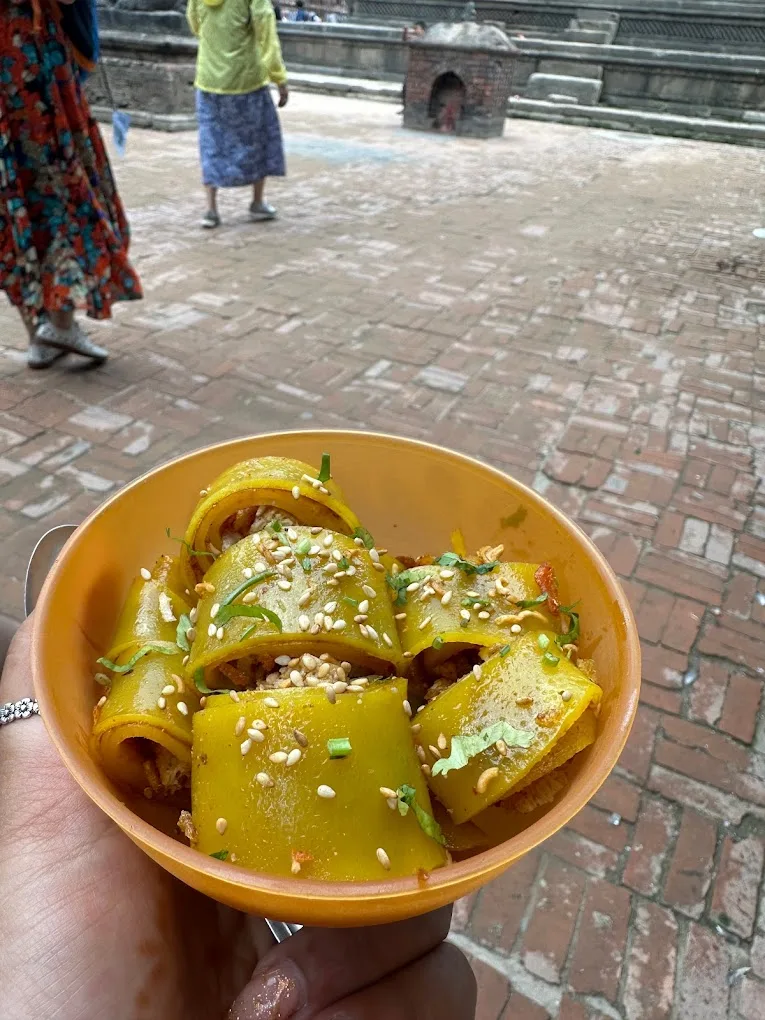
The noodles are made from potato starch or mung bean, which might explain the jelly-like texture. During the preparation process, they’re rolled out into a sheet and then sliced into thick strips. By that, I do mean thicker than average noodles. The thickness, combined with the consistency, makes it easier for the noodles to absorb the drizzles of sauces that define the dish.
For me, the sauce is where the magic happens. Classic laphing is commonly doused with a blend of green chilies, chili oil, sesame oil, garlic paste, vinegar, and soy sauce. Because it’s so refreshing and easy to digest (yes, despite all the oils!), locals typically enjoy it in the summer.
You definitely won’t run out of places to try laphing in Nepal, especially around Boudhanath. But I suggest you skip the touristy cafes and wander down the alleyways tucked behind the stupa. Over there, you’ll find a couple of unnamed stalls run by Tibetan aunties. The stalls are tiny, but their laphing is the real deal.

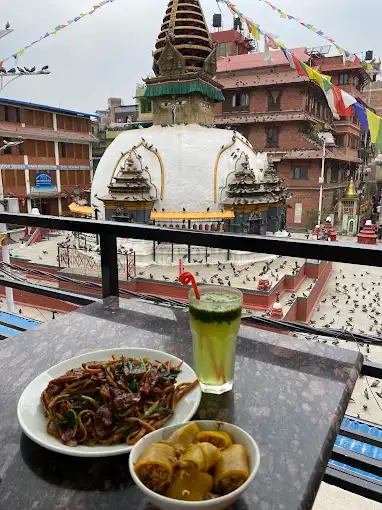
(Credit: Janine Carmela)
Local tip: Just a quick heads up: some vendors automatically add some sugar to make it less spicy for their foreign clients. I found out the hard way that they don’t always ask if you want it sweetened. If you don’t, I suggest that you say “chini naidu” (no sugar please) when placing your order.
While you’re exploring Boudhanath, you can also try Thukpa, a similar street food that consists of noodles, meat (or vegetables), all mixed in a savory broth.
6. Bara: The Newari Lentil Pancake
I know, I know. Another Newari snack. But as I mentioned, they’ve got some of the most iconic street foods in Nepal! Locally known as “wo”, bara is a thick, savory pancake made from ground black lentils. Fresh bara is crispy on the outside, but delightfully fluffy inside.
When I first tried bara, I was quite surprised by the lack of pungent spices. Unlike most Nepalese snacks, bara (or at least the ones that I’ve had) is quite subtly flavored. You’ll get hints of turmeric, cumin, and ginger, but none of that tongue-tingling spiciness that comes with the local cuisine. That being said, it’s pretty moreish and a great alternative for those who can’t handle a lot of spice.
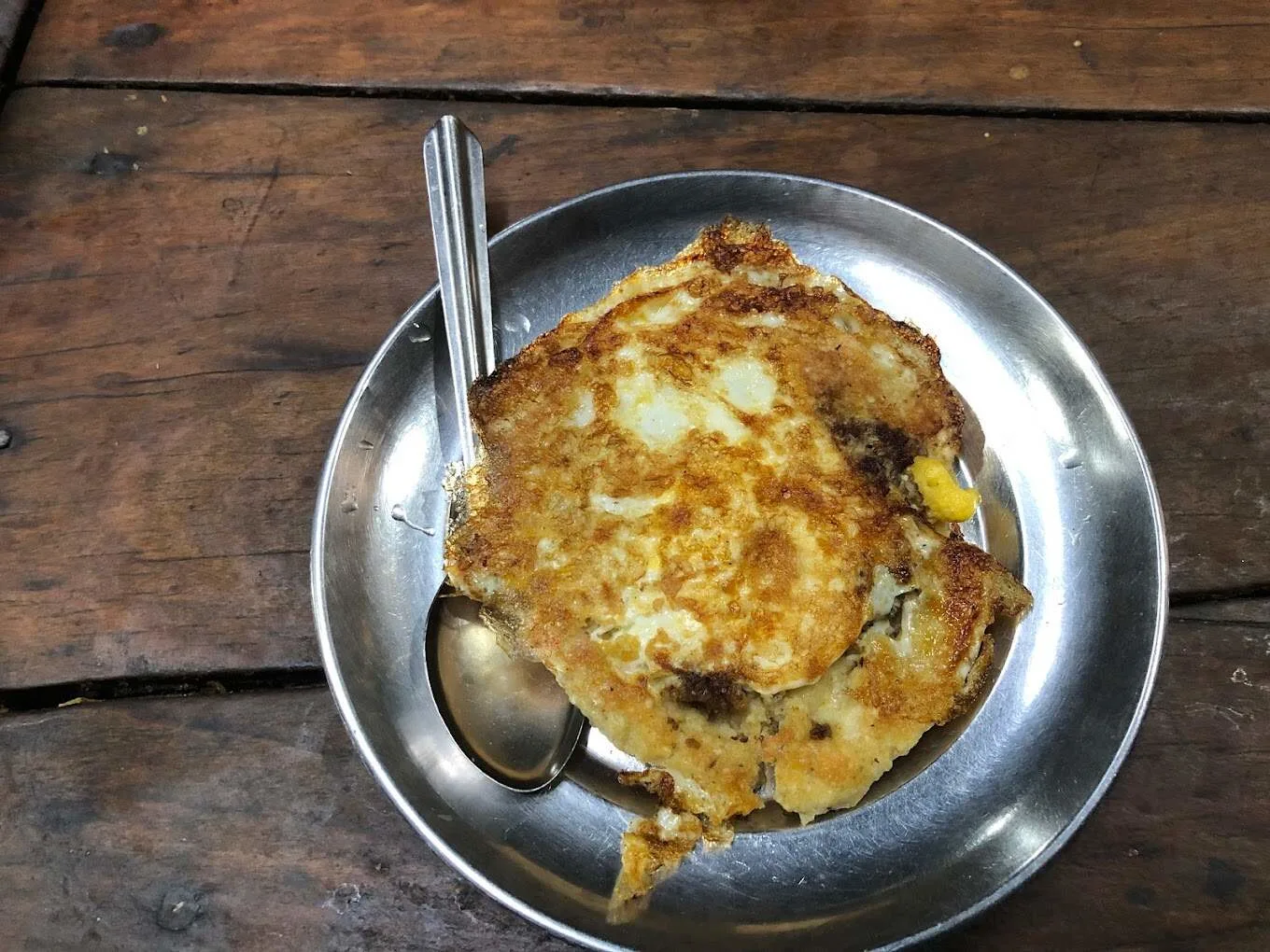
During Newari festivals like Sithi Nakha and Janku, bara is usually served at lunchtime, alongside chiura wine, sukuti, and pickles.
At street stalls, you’ll often find vendors pouring the batter into cast-iron pans. Because of its mild flavor profile, vendors usually serve it alongside an aromatic curry to dip the bara in. While classic bara is served plain, you’ll also find vendors selling kheema bara (spiced minced buffalo) and egg bara.
Travel tip: If you’re exploring Durbar Square, make a stop by Honacha, a family-run eatery that’s been making bara for generations. This place is said to have the best bara in Nepal – as evidenced by the crowds of locals lined up outside.

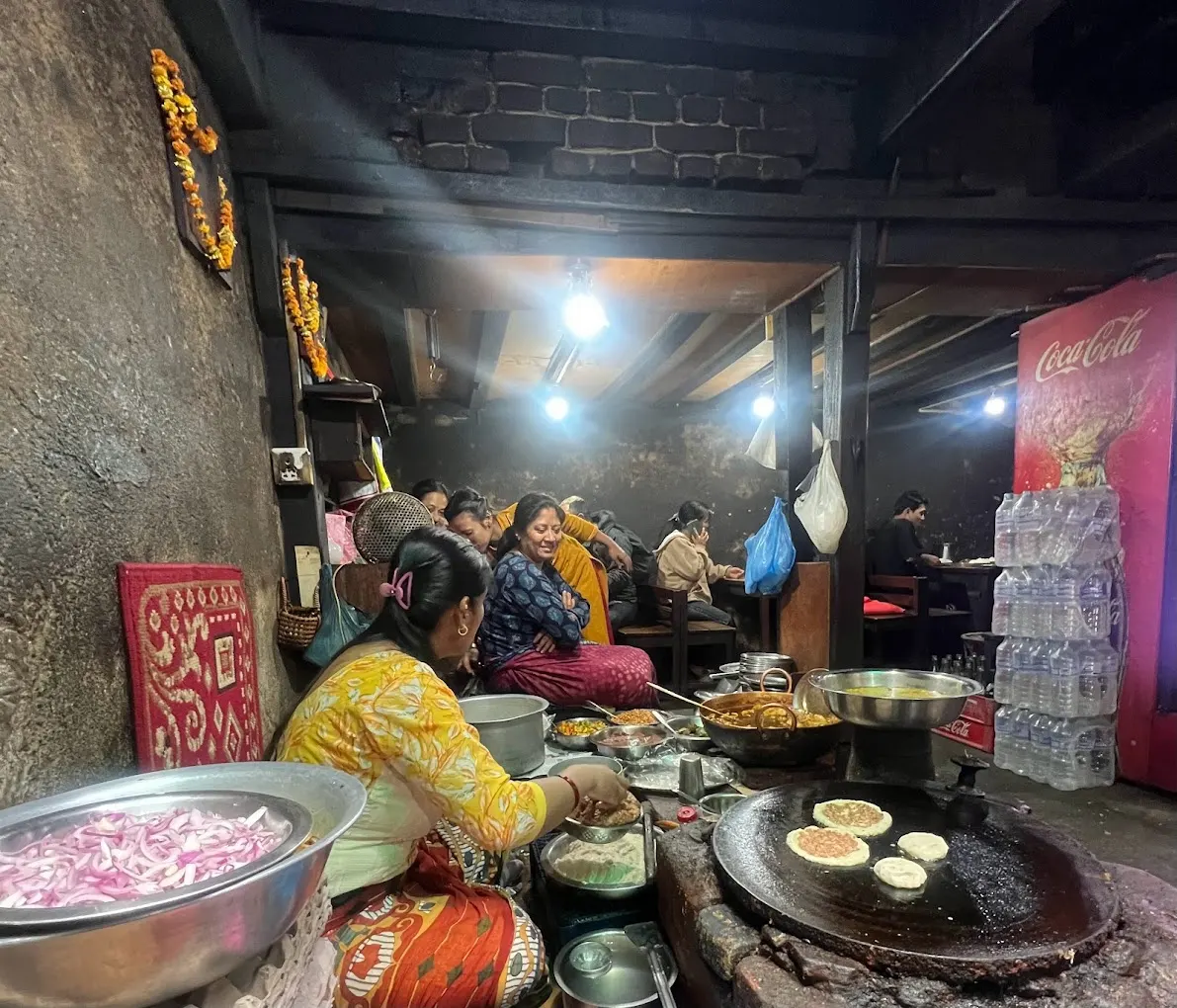
7. Bhakka: Street Food in Nepal with Terai Flavors
Last up on our list of street food in Nepal is bhakka, which is a staple breakfast item in eastern Terai. If you’re familiar with Indian street food, bhakka might remind you of dishes like idli or puttu.
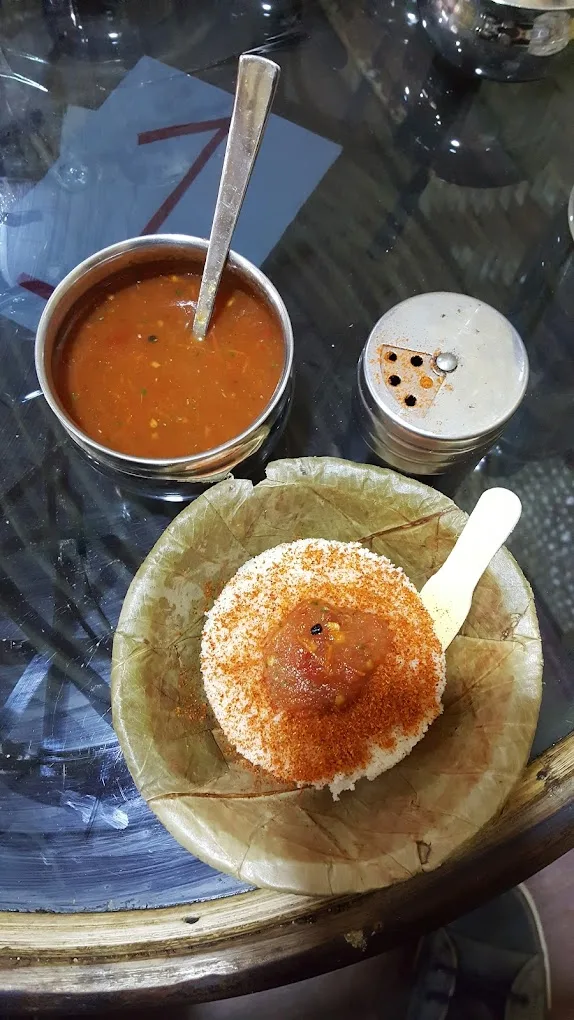
Like most desserts in Nepal, bhakka is made from pounding rice, which is then sieved into a fine, flour-like consistency. The flour is then compacted into molds lined with cloth before being steamed in special metal or clay steamers.
It takes just a few minutes to steam, and afterwards, they push the delicately crumbly, cloud-like cake on a clean cloth to keep it soft. It’s either served plain, with a pickle on top, alongside a curry sauce, or with a mix of coarse salt and chili flakes.
I do want to mention that while bhakka is a popular breakfast street food in some lowland rural areas, it’s not super popular in touristy spots like Pokhara or Kathmandu. So, your best bet would be to check out specialty Newa or Terai eateries like Fast Food Newari Khaja Ghar.

For me, the best bhakka I had was during the Maghe Sankranti festival (mid-January), also known as the Harvest Festival. There’s something about the taste of that new-harvest rice that just hits differently.
Travel tip: If you want to eat bhakka like a local, sprinkle a dash of chili-salt mix on each bite right before eating.
It really seems to enhance the taste and cloud-like texture. Pair your bhakka with a cup of black tea with a dollop of ghee added to it. Scrumptious!
Share This Article

Traveling soon? Subscribe to The Insight below and get exclusive access to our personalized travel advice community via WhatsApp so you can ask all your burning travel questions.
Looking for the best comprehensive travel insurance? SafetyWing has you covered.
And for your eSIM in every country, there is only one option we recommend: Airalo.
Read more of our best insights from around the world
